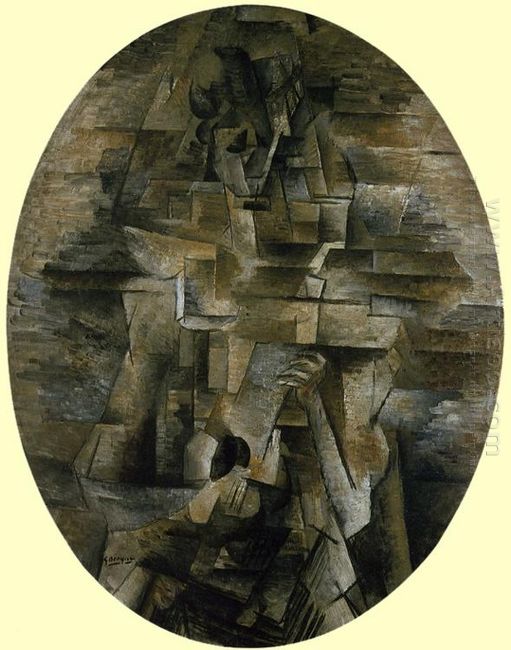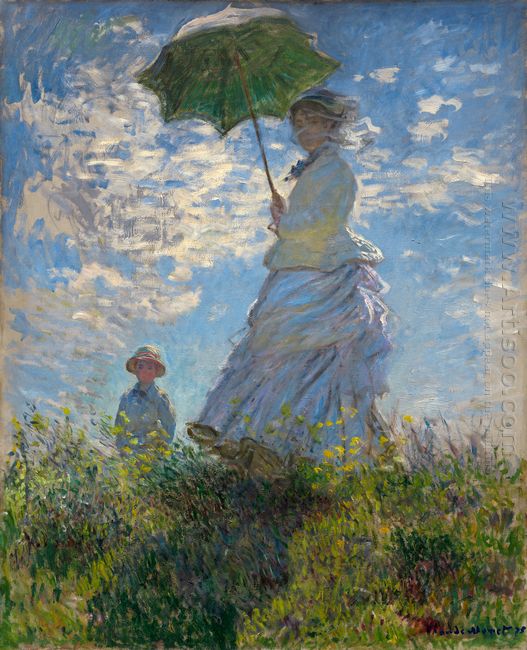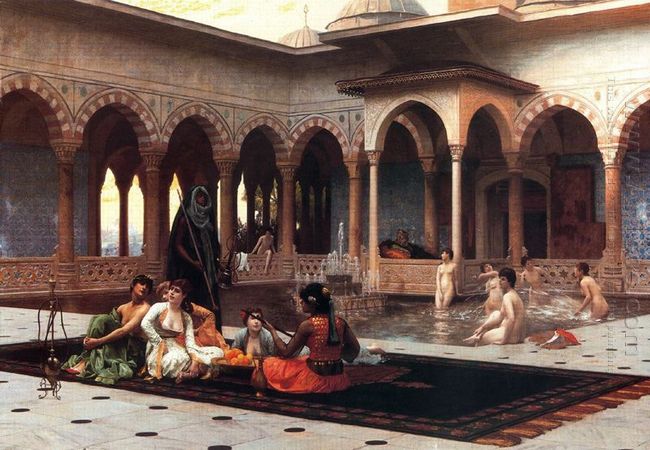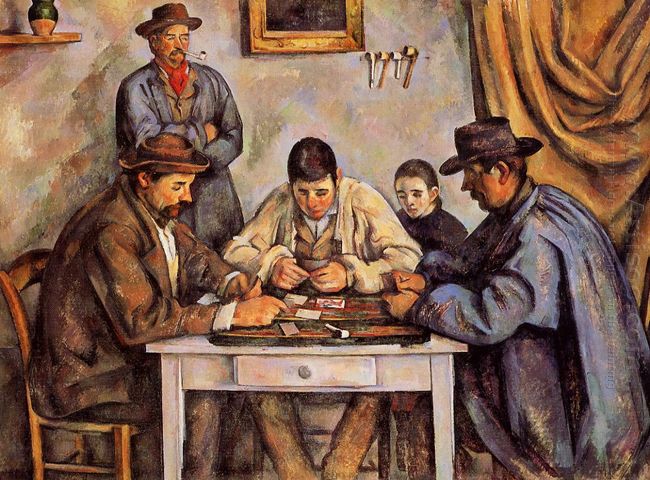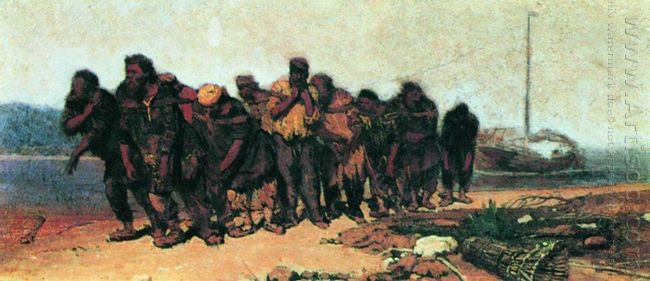Woman with a Mandolin made between 1909 and 1910 was a representative of Braque in the analytical cubism period. In the same period, Picasso paintings had this kind of musical instrument. Reportedly, the Cubist painters’ preference for mandolin was largely influenced by the famous poet Mallarme.
In Mallarme’s poetry, mandolin was a symbol with the most preference and multiple metaphors. Because it was able to produce the music, and its surface was regarded the symbol of art creation. Meanwhile, because its shape was like a woman's womb, it was regarded as a kind of similar hint. However, for the Cubists, the effect of Mallarme was more of the artistic skills of decomposition and reconstruction in poem creation, than the choice of subject as the instrument. The cubist artists decomposed the objective images and reorganize the separated fragments in Cubism the painting. Here Mallarme somewhat played the impact.
Relatively speaking, Braque was more extreme to make the image decomposition than Picasso. He mostly performed the experiment of analytical form in the still life painting. This may be because the still life had fewer constraints for him. In this painting, the instrument surrounded by the waves of color and shape was hidden in the vibration of block, color and rhythm. All elements resonated with the shadow with the sound characteristics, light and reflection. The whole Braque Cubism painting was full of geometric pieces in all shapes and we neither found an empty space nor a little innervations area. The diffused light and those blocks leaning in this or that direction corresponded with each other.
As Braque wrote in a book, “The echo follows the echo to make a resonance.” And what really make many visual elements join together was the round hole on the mandolin of the central painting; this dark figure was also the center of all the crossed lines. Thus, the vitality of the painting was composed of the movement in two different directions: one was the upward movement; another was the rotational movement. The colors in the painting were as simple as those in his early works. However, these colors appeared more lively and changeable without losing the simplicity.








